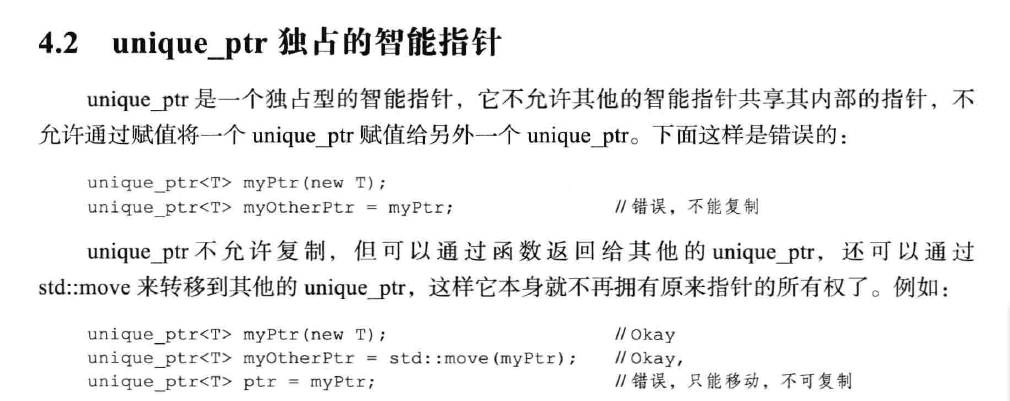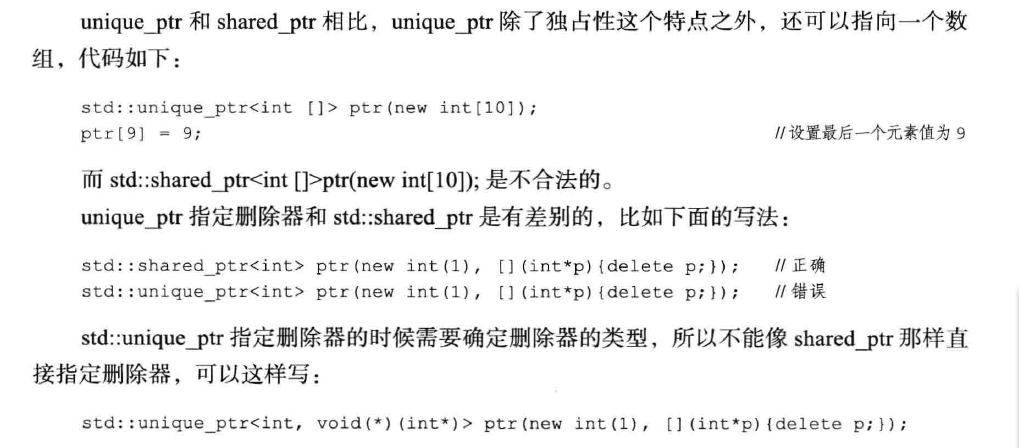- Spring AI 结合 MCP MySQL 实现对话式数据库查询
没刮胡子
软件开发技术实战专栏人工智能AISpring数据库spring人工智能spring-aimcp-servermysql
在现代应用开发中,将人工智能与数据库查询结合可以创造更自然、更智能的用户交互方式。下面我将详细介绍如何使用SpringAI框架结合MCP(可能指MySQL连接池或相关组件)实现对话中的数据库查询功能。什么是SpringAI和MCPMySQLSpringAI框架概述SpringAI是基于Spring生态的人工智能集成框架,它提供了:与大型语言模型(LLM)的集成能力对话管理和自然语言处理功能业务逻辑
- AingDesk开源免费的本地 AI 模型管理工具(搭建和调用MCP)
没刮胡子
Linux服务器技术软件开发技术实战专栏人工智能AI开源人工智能AI助手mcpsse知识库智能体
说明AingDesk是一款开源免费的本地AI模型管理工具,旨在简化AI模型部署流程并提升用户体验。AingDesk支持本地AI模型及API+知识库搭建。支持知识库、模型API、分享、联网搜索、智能体。✨产品亮点跨平台支持客户端支持Windows、macOS,服务端可通过Docker部署高效下载与网络优化自动选择最优下载线路,支持断点续传,提升大模型部署速度兼容OpenAIAPI格式,方便第三方模型
- MiniMax - M1:开源大模型的革命性突破
开源大模型MiniMax-M1研究报告一、引言在人工智能技术飞速发展的当下,大模型领域的竞争愈发激烈。开源大模型以其开放性、可定制性和社区协作的优势,逐渐成为推动人工智能技术进步的重要力量。MiniMax-M1作为全球首个开源大规模混合架构的推理模型,一经发布便引起了广泛关注。它在长上下文处理、推理效率和成本控制等方面展现出了卓越的性能,为人工智能的发展带来了新的思路和方向。本文将对MiniMax
- 信息抽取领域关键Benchmark方法:分类体系
信息抽取领域关键Benchmark方法:分类体系摘要信息抽取(InformationExtraction,IE)作为自然语言处理的核心任务之一,旨在从非结构化文本中识别并结构化关键信息(如实体、关系、事件等),广泛应用于知识图谱构建、智能问答和数据分析等领域。近年来,随着深度学习技术的快速发展,信息抽取方法在性能和应用范围上取得了显著进步,但同时也面临着任务多样性、跨领域泛化性以及低资源场景下的适
- 常见的强化学习算法分类及其特点
ywfwyht
人工智能算法分类人工智能
强化学习(ReinforcementLearning,RL)是一种机器学习方法,通过智能体(Agent)与环境(Environment)的交互来学习如何采取行动以最大化累积奖励。以下是一些常见的强化学习算法分类及其特点:1.基于值函数的算法这些算法通过估计状态或状态-动作对的价值来指导决策。Q-Learning无模型的离线学习算法。通过更新Q值表来学习最优策略。更新公式:Q(s,a)←Q(s,a)
- 车牌识别与标注:基于百度OCR与OpenCV的实现(一)
喜欢踢足球的老罗
大模型应用开发实践之旅ocropencv人工智能
车牌识别与标注:基于百度OCR与OpenCV的实现在计算机视觉领域,车牌识别是一项极具实用价值的技术,广泛应用于交通监控、智能停车场管理等领域。本文将介绍如何在macOS系统下,利用百度OCRAPI进行车牌识别,并结合OpenCV库在图片上绘制标注框和车牌号码,实现一个完整的车牌识别与标注流程。整个工程将使用PyCharm进行组织和开发。一、系统环境与工程结构系统环境操作系统:macOS开发工具:
- 危急时刻显身手:AORO M6 Pro防爆对讲机的实战智慧
AORO_BEIDOU
人工智能信息与通信5G科技
在工业安全与应急通信领域,设备的技术自主性与智能化水平已成为衡量核心竞争力的关键指标。面对复杂多变的作业环境与日益严苛的安全标准,AOROM6Pro防爆对讲机凭借“纯血国产”的技术底座与“AI赋能”的创新突破,为危化、能源、公共安全等领域提供了兼具安全性与高效能的通信解决方案。这款斩获2024年度AI天马“臻品”殊荣的产品,不仅重新定义了防爆对讲机的技术标杆,更以本土化创新回应了行业对极端场景通信
- 基于人工智能的图表生成器
警世龙
开发记录人工智能自然语言处理
基于人工智能的图表生成器软件需求分析本项目旨在开发一个基于Web的图表生成工具,利用人工智能技术将自然语言描述转换为专业的流程图、时序图等可视化图表。具体需求如下:支持用户输入自然语言描述来生成图表。提供实时预览功能,让用户能够即时看到生成的图表。允许用户对生成的Mermaid代码进行编辑。支持图表的缩放和平移操作。提供代码保存和图片导出功能。具备快捷键支持,提高用户操作效率。技术选型前端HTML
- Scikit-learn:机器学习的「万能工具箱」
科技林总
DeepSeek学AI人工智能
——三行代码构建AI模型的全栈指南**###**一、诞生背景:让机器学习从实验室走向大众****2010年前的AI困境**:-学术界模型难以工程化-算法实现碎片化(MATLAB/C++主导)-企业应用门槛极高>**破局者**:DavidCournapeau发起*Scikit-learn*项目,**统一算法接口**+**Python简易语法**=机器学习民主化革命---###**二、设计哲学:一致性
- Edge-TTS在广电系统中的语音合成技术的创新应用
Edge-TTS在广电系统中的语音合成技术的创新应用作者:本人是一名县级融媒体中心的工程师,多年来一直坚持学习、提升自己。喜欢Python编程、人工智能、网络安全等多领域的技术。摘要随着人工智能技术的快速发展,文字转语音(Text-to-Speech,TTS)系统已成为多种应用的重要组成部分,尤其在广播电视领域。本文介绍了一种基于Edge-TTS大模型的文字转语音工具,该工具结合了现代文本处理和语
- 海思Hi3519DV500方案1200万无人机吊舱套板
weixin_Todd_Wong2010
嵌入式硬件AI前端边缘计算图像处理
海思Hi3519DV500方案1200万无人机吊舱套板Hi3519DV500是一颗面向行业市场推出的超高清智能网络摄像头SoC。该芯片最高支持四路sensor输入,支持最高4K@30fps的ISP图像处理能力,支持2FWDR、多级降噪、六轴防抖、全景拼接、多光谱融合等多种传统图像增强和处理算法,支持通过AI算法对输入图像进行实时降躁等处理,为用户提供了卓越的图像处理能力,集成了高效的神经网络推理引
- Java猜拳小游戏
wp_tao
Java从入门到精通java开发语言
Java猜拳小游戏使用java设计一个猜拳小游戏,要求如下:在控制台提示用户输入出拳结果(1:石头,2:剪刀,3:布)。计算机生成出拳结果。裁判判断出拳结果。输出游戏结果。com.game.Judge.java。packagecom.game;publicclassJudge{privateintplayer1;//选手一的出拳结果:1为石头,2为剪刀,3为布
- 掌握编程:数字时代的必备技能
afsdfewasdf
AI编程
编程在现代社会的必要性学习编程在当今数字化时代具有显著优势。随着科技发展,编程技能已成为许多行业的基础需求,从软件开发到数据分析,甚至传统行业也在逐步依赖技术解决方案。掌握编程能力可以提升个人竞争力,开拓职业机会。就业市场需求旺盛技术岗位如软件工程师、数据科学家、人工智能专家等持续增长。非技术岗位如市场营销、金融分析也要求基础编程知识处理自动化任务或数据分析。掌握编程技能能显著提高薪资水平和职业发
- WPF中获取主窗体
周杰伦fans
ai学习参考WPF笔记学习C#的笔记wpf
在WPF的MVVM模式中,通常不直接引用主窗体(MainWindow),而是通过依赖注入、事件聚合器或命令参数传递等方式实现逻辑解耦。以下是几种推荐方法:方法1:依赖注入(推荐)在ViewModel中定义一个接口,通过构造函数注入主窗体服务。步骤:定义接口(可选):publicinterfaceIMainWindowService{voidShowMessage(stringmessage);}在
- 微信支付回调验证实战:构建防伪造请求的3道防火墙
IT莫染
工具及插件#配置SpringBootDemo微信SpringBoot3.2微信支付V3API数据签名防重放攻击
⚡痛点场景当你的电商系统遭遇:黑客伪造支付成功回调→0元订单自动发货重放攻击→单笔交易多次发货中间人篡改金额→1999元订单变成1.99元微信官方数据:未验签的回调接口被攻击概率高达73%安全架构三重防护️核心代码实现(SpringBoot≥3.1,JDK17+)防火墙1:签名验证(关键防伪造)@RestController@RequestMapping("/payment")publicclas
- 制造业多工厂协同如何破局?深度解析网络方案优劣,助力企业高效转型
北极光SD-WAN组网
网络
随着制造业数字化和智能化转型的加速,越来越多的企业在全国乃至全球范围内布局生产基地。然而,多工厂异地协同中,网络性能的瓶颈往往成为阻碍企业高效运营的一大难题。本文将围绕制造业多工厂异地协同这一场景,详细分析其痛点,并对比几种主流网络解决方案的优劣,帮助企业找到最优的网络架构。一、多工厂异地协同的核心痛点在制造业的日常生产中,异地分布的生产基地(如总部、分厂、车间)需要高效协同以确保生产计划的执行和
- SD-WAN优化云应用与多云架构访问的关键策略
1.SD-WAN如何优化企业对公有云和SaaS应用的访问?1.1智能流量优化SD-WAN通过应用识别技术,可以根据不同的业务应用流量需求,动态分配网络资源。例如,SD-WAN能够优先为钉钉、企业微信、金山文档等关键SaaS应用分配低延迟、高带宽的链路,确保这些应用的高效运行。动态路径选择:SD-WAN可实时监测网络性能(如延迟、抖动、丢包率),并基于网络状态动态选择访问云服务(如阿里云、腾讯云、华
- SD-WAN在智慧工厂中的实践:云平台与边缘计算高效协作解析
北极光SD-WAN组网
边缘计算人工智能
随着工业4.0与智能制造的深入推进,智慧工厂成为现代制造业的重要发展方向。智慧工厂依托云计算与边缘计算协同处理海量数据,以实现生产过程的智能化。然而,云平台和边缘计算之间的数据传输对网络的可靠性、灵活性和实时性提出了更高要求。在此背景下,SD-WAN(软件定义广域网)技术成为解决这一问题的重要工具。本文将探讨SD-WAN技术在制造业中如何优化云平台与边缘计算的协作应用,分析其在智慧工厂场景下的具体
- 前端开发中的AI辅助测试:从手动到智能的转变
喜葵
人工智能
前端开发中的AI辅助测试:从手动到智能的转变作者:喜葵更新时间:2025-05-16前言前端测试一直是开发流程中的痛点:写测试代码耗时、维护成本高、覆盖率难提升。随着AI技术的发展,前端测试正在经历一场从"手动编写"到"AI辅助生成"的革命性转变。本文将探讨AI如何改变前端测试的现状,以及实际应用中的最佳实践。文章目录前端测试的现状与挑战AI辅助测试的核心技术实战案例:AI生成单元测试智能测试的优
- Spring Cache+Redis缓存方案详解:从代码到实践
大手你不懂
JavaJava项目实战Redisspring缓存redis
描述:在现代Java开发中,缓存是提升系统性能的核心手段之一。本文通过实际代码案例,深入解析SpringCache与Redis的集成原理,结合项目中的ModuleDatabaseInfoService接口和RedisConfig配置,探讨如何通过声明式缓存实现高效的数据库访问优化。一、核心代码解析1.服务接口设计(拿查询数据源配置信息举例)publicinterfaceModuleDatabase
- Club_IntelliMatch_Development_Guide
Joseit
pythonpythonpygamedjangoflask
ClubIntelliMatch系统-全栈开发流程文档概述ClubIntelliMatch系统是一个现代化的社团活动智能匹配平台,采用前后端分离架构。系统基于PythonFlask构建RESTfulAPI后端,Vue.js3+Vite构建现代化前端,MySQL作为持久化数据存储。本文档深入分析了整个开发流程的技术架构、设计原则和实现细节。系统架构流程图后端API架构前端组件架构app.pyFlas
- 用AI给AR加“智慧”:揭秘增强现实智能互动的优化秘密
Echo_Wish
人工智能前沿技术人工智能ar
用AI给AR加“智慧”:揭秘增强现实智能互动的优化秘密引子:增强现实,到底还能怎么更聪明?还记得当年PokémonGO火爆全球的场景吗?玩家们手机对准街头,虚拟小精灵活灵活现地跳出来,那就是增强现实(AR)最经典的应用之一。随着硬件发展和算法进步,AR正逐步从“炫酷玩具”变成生产力工具、教育助手、零售新体验。但AR想要更“聪明”,不是简单把虚拟物放到现实里那么简单,而是让虚拟世界和现实环境更自然地
- TensorFlow:开启智能时代的引擎
科技林总
DeepSeek学AI人工智能
想象一下,计算机能看懂病历、汽车能自动驾驶、机器能创作艺术——这一切的核心,正是深度学习的力量。而推动这场革命的引擎之一,就是今天的主角:**TensorFlow**。---###**一、背景:为什么需要TensorFlow?1.**深度学习的爆发**-传统编程无法解决图像识别、自然语言处理等复杂问题。-神经网络需要高效工具处理海量数据和计算。2.**Google的答案**-2015年开源Tens
- C++ —— 内存管理
啥也不懂!!!
C++c++开发语言
文章目录1.回顾C语言内存管理2.C++的动态内存管理方式2.1new/delete操作内置类型2.2new和delete操作自定义类型3.operatornew和operatordelete函数3.1operatornew与operatordelete函数4.new和delete的实现原理4.1内置类型4.2自定义类型5.new和delete操作不匹配(了解)6.定位new表达式(了解)7.常见
- 短视频运营怎样提高视频剪辑效率?
矩阵营销老黄
新媒体运营流量运营营销剪辑
提高短视频剪辑效率的核心在于将“智能工具”融入全流程管理,并建立标准化操作体系。一、前期策划与素材管理1.AI爆款脚本拆解使用视频宝AI生成模版功能,精准查询全网爆款视频,拆解爆款脚本结构,自动分离视频、音频、字幕,避免盲目剪辑。2.素材管理按标签化管理素材(如“产品特写逆光”“口播惊叹句12种版本”),上传云端储存,组织内部各成员都能在线共享素材。还可以自行储备大量无版权空镜素材,存储时添加“季
- AI优化算法实战:使用粒子群优化求解复杂工程问题
AI学长带你学AI
ai
AI优化算法实战:使用粒子群优化求解复杂工程问题关键词:粒子群优化(PSO)、全局优化、工程问题、智能算法、参数调优摘要:本文以“鸟群觅食”为灵感来源,深入浅出地讲解粒子群优化(ParticleSwarmOptimization,PSO)算法的核心原理,并通过机械结构轻量化设计的实战案例,展示其在复杂工程问题中的应用。文章从算法起源到数学模型,从代码实现到工程落地,层层拆解技术细节,帮助读者快速掌
- C++学习——C++基础知识
未来牛马之星
C++学习c++学习开发语言
1.C++语言简介1.1一个简单的C++程序#include//包含头文件iostreamusingnamespacestd;//使用命名空间stdintmain(){//cout语句,有cout和插入运算符//C形式的头文件#include//C++形式的头文件,二者效果运用建议:尽量用符合C++标准的形式,即在包含C++头文件时一般不用后缀。用户自己编写头文件,可以用.h作后缀。这样从#inc
- VS2019 配置QT
轩宇^_^
qtqt5
步骤:下载安装S2019(可以到官网下载)按默认的C++安装即可。下载安装QT创建一个工程文件在VS中插件添加qt的插件如果插件下载失败可以到这个链接下载,或者换一个网下载。在vs中配置qtVersions选择打开界面的designer:右击UI界面-》选择打开方式-》选择designer的安装路径,设置为默认。参考路径:D:\installapp\qt\5.15.2\msvc2019_64\bi
- C++基本语法与类和对象一
wangjialelele
c++
//C++兼容绝大多数C语言语法//C语言的第一个问题是命名冲突,如rand在有头文件和没有的时候#include//是inputoutputstream的缩写,是标准的输入输出流库namespacewjl{intrand=10;//可以定义变量、函数、结构体等structNode{intdata;structNode*next;};//命名空间是可以无限嵌套的//访问方式:bit::pg::ra
- 深度剖析AI人工智能在自动驾驶中的系统优化
AI云原生与云计算技术学院
人工智能自动驾驶机器学习ai
深度剖析AI人工智能在自动驾驶中的系统优化关键词:AI人工智能、自动驾驶、系统优化、传感器融合、决策算法摘要:本文深入探讨了AI人工智能在自动驾驶系统中的优化问题。从自动驾驶的背景入手,详细解释了相关核心概念,如传感器、决策算法等。阐述了这些核心概念之间的关系,介绍了核心算法原理和具体操作步骤,还通过数学模型和公式进行了理论支持。给出了项目实战案例,分析了实际应用场景,推荐了相关工具和资源,最后探
- Java实现的基于模板的网页结构化信息精准抽取组件:HtmlExtractor
yangshangchuan
信息抽取HtmlExtractor精准抽取信息采集
HtmlExtractor是一个Java实现的基于模板的网页结构化信息精准抽取组件,本身并不包含爬虫功能,但可被爬虫或其他程序调用以便更精准地对网页结构化信息进行抽取。
HtmlExtractor是为大规模分布式环境设计的,采用主从架构,主节点负责维护抽取规则,从节点向主节点请求抽取规则,当抽取规则发生变化,主节点主动通知从节点,从而能实现抽取规则变化之后的实时动态生效。
如
- java编程思想 -- 多态
百合不是茶
java多态详解
一: 向上转型和向下转型
面向对象中的转型只会发生在有继承关系的子类和父类中(接口的实现也包括在这里)。父类:人 子类:男人向上转型: Person p = new Man() ; //向上转型不需要强制类型转化向下转型: Man man =
- [自动数据处理]稳扎稳打,逐步形成自有ADP系统体系
comsci
dp
对于国内的IT行业来讲,虽然我们已经有了"两弹一星",在局部领域形成了自己独有的技术特征,并初步摆脱了国外的控制...但是前面的路还很长....
首先是我们的自动数据处理系统还无法处理很多高级工程...中等规模的拓扑分析系统也没有完成,更加复杂的
- storm 自定义 日志文件
商人shang
stormclusterlogback
Storm中的日志级级别默认为INFO,并且,日志文件是根据worker号来进行区分的,这样,同一个log文件中的信息不一定是一个业务的,这样就会有以下两个需求出现:
1. 想要进行一些调试信息的输出
2. 调试信息或者业务日志信息想要输出到一些固定的文件中
不要怕,不要烦恼,其实Storm已经提供了这样的支持,可以通过自定义logback 下的 cluster.xml 来输
- Extjs3 SpringMVC使用 @RequestBody 标签问题记录
21jhf
springMVC使用 @RequestBody(required = false) UserVO userInfo
传递json对象数据,往往会出现http 415,400,500等错误,总结一下需要使用ajax提交json数据才行,ajax提交使用proxy,参数为jsonData,不能为params;另外,需要设置Content-type属性为json,代码如下:
(由于使用了父类aaa
- 一些排错方法
文强chu
方法
1、java.lang.IllegalStateException: Class invariant violation
at org.apache.log4j.LogManager.getLoggerRepository(LogManager.java:199)at org.apache.log4j.LogManager.getLogger(LogManager.java:228)
at o
- Swing中文件恢复我觉得很难
小桔子
swing
我那个草了!老大怎么回事,怎么做项目评估的?只会说相信你可以做的,试一下,有的是时间!
用java开发一个图文处理工具,类似word,任意位置插入、拖动、删除图片以及文本等。文本框、流程图等,数据保存数据库,其余可保存pdf格式。ok,姐姐千辛万苦,
- php 文件操作
aichenglong
PHP读取文件写入文件
1 写入文件
@$fp=fopen("$DOCUMENT_ROOT/order.txt", "ab");
if(!$fp){
echo "open file error" ;
exit;
}
$outputstring="date:"." \t tire:".$tire."
- MySQL的btree索引和hash索引的区别
AILIKES
数据结构mysql算法
Hash 索引结构的特殊性,其 检索效率非常高,索引的检索可以一次定位,不像B-Tree 索引需要从根节点到枝节点,最后才能访问到页节点这样多次的IO访问,所以 Hash 索引的查询效率要远高于 B-Tree 索引。
可能很多人又有疑问了,既然 Hash 索引的效率要比 B-Tree 高很多,为什么大家不都用 Hash 索引而还要使用 B-Tree 索引呢
- JAVA的抽象--- 接口 --实现
百合不是茶
抽象 接口 实现接口
//抽象 类 ,方法
//定义一个公共抽象的类 ,并在类中定义一个抽象的方法体
抽象的定义使用abstract
abstract class A 定义一个抽象类 例如:
//定义一个基类
public abstract class A{
//抽象类不能用来实例化,只能用来继承
//
- JS变量作用域实例
bijian1013
作用域
<script>
var scope='hello';
function a(){
console.log(scope); //undefined
var scope='world';
console.log(scope); //world
console.log(b);
- TDD实践(二)
bijian1013
javaTDD
实践题目:分解质因数
Step1:
单元测试:
package com.bijian.study.factor.test;
import java.util.Arrays;
import junit.framework.Assert;
import org.junit.Before;
import org.junit.Test;
import com.bijian.
- [MongoDB学习笔记一]MongoDB主从复制
bit1129
mongodb
MongoDB称为分布式数据库,主要原因是1.基于副本集的数据备份, 2.基于切片的数据扩容。副本集解决数据的读写性能问题,切片解决了MongoDB的数据扩容问题。
事实上,MongoDB提供了主从复制和副本复制两种备份方式,在MongoDB的主从复制和副本复制集群环境中,只有一台作为主服务器,另外一台或者多台服务器作为从服务器。 本文介绍MongoDB的主从复制模式,需要指明
- 【HBase五】Java API操作HBase
bit1129
hbase
import java.io.IOException;
import org.apache.hadoop.conf.Configuration;
import org.apache.hadoop.hbase.HBaseConfiguration;
import org.apache.hadoop.hbase.HColumnDescriptor;
import org.apache.ha
- python调用zabbix api接口实时展示数据
ronin47
zabbix api接口来进行展示。经过思考之后,计划获取如下内容: 1、 获得认证密钥 2、 获取zabbix所有的主机组 3、 获取单个组下的所有主机 4、 获取某个主机下的所有监控项
- jsp取得绝对路径
byalias
绝对路径
在JavaWeb开发中,常使用绝对路径的方式来引入JavaScript和CSS文件,这样可以避免因为目录变动导致引入文件找不到的情况,常用的做法如下:
一、使用${pageContext.request.contextPath}
代码” ${pageContext.request.contextPath}”的作用是取出部署的应用程序名,这样不管如何部署,所用路径都是正确的。
- Java定时任务调度:用ExecutorService取代Timer
bylijinnan
java
《Java并发编程实战》一书提到的用ExecutorService取代Java Timer有几个理由,我认为其中最重要的理由是:
如果TimerTask抛出未检查的异常,Timer将会产生无法预料的行为。Timer线程并不捕获异常,所以 TimerTask抛出的未检查的异常会终止timer线程。这种情况下,Timer也不会再重新恢复线程的执行了;它错误的认为整个Timer都被取消了。此时,已经被
- SQL 优化原则
chicony
sql
一、问题的提出
在应用系统开发初期,由于开发数据库数据比较少,对于查询SQL语句,复杂视图的的编写等体会不出SQL语句各种写法的性能优劣,但是如果将应用系统提交实际应用后,随着数据库中数据的增加,系统的响应速度就成为目前系统需要解决的最主要的问题之一。系统优化中一个很重要的方面就是SQL语句的优化。对于海量数据,劣质SQL语句和优质SQL语句之间的速度差别可以达到上百倍,可见对于一个系统
- java 线程弹球小游戏
CrazyMizzz
java游戏
最近java学到线程,于是做了一个线程弹球的小游戏,不过还没完善
这里是提纲
1.线程弹球游戏实现
1.实现界面需要使用哪些API类
JFrame
JPanel
JButton
FlowLayout
Graphics2D
Thread
Color
ActionListener
ActionEvent
MouseListener
Mouse
- hadoop jps出现process information unavailable提示解决办法
daizj
hadoopjps
hadoop jps出现process information unavailable提示解决办法
jps时出现如下信息:
3019 -- process information unavailable3053 -- process information unavailable2985 -- process information unavailable2917 --
- PHP图片水印缩放类实现
dcj3sjt126com
PHP
<?php
class Image{
private $path;
function __construct($path='./'){
$this->path=rtrim($path,'/').'/';
}
//水印函数,参数:背景图,水印图,位置,前缀,TMD透明度
public function water($b,$l,$pos
- IOS控件学习:UILabel常用属性与用法
dcj3sjt126com
iosUILabel
参考网站:
http://shijue.me/show_text/521c396a8ddf876566000007
http://www.tuicool.com/articles/zquENb
http://blog.csdn.net/a451493485/article/details/9454695
http://wiki.eoe.cn/page/iOS_pptl_artile_281
- 完全手动建立maven骨架
eksliang
javaeclipseWeb
建一个 JAVA 项目 :
mvn archetype:create
-DgroupId=com.demo
-DartifactId=App
[-Dversion=0.0.1-SNAPSHOT]
[-Dpackaging=jar]
建一个 web 项目 :
mvn archetype:create
-DgroupId=com.demo
-DartifactId=web-a
- 配置清单
gengzg
配置
1、修改grub启动的内核版本
vi /boot/grub/grub.conf
将default 0改为1
拷贝mt7601Usta.ko到/lib文件夹
拷贝RT2870STA.dat到 /etc/Wireless/RT2870STA/文件夹
拷贝wifiscan到bin文件夹,chmod 775 /bin/wifiscan
拷贝wifiget.sh到bin文件夹,chm
- Windows端口被占用处理方法
huqiji
windows
以下文章主要以80端口号为例,如果想知道其他的端口号也可以使用该方法..........................1、在windows下如何查看80端口占用情况?是被哪个进程占用?如何终止等. 这里主要是用到windows下的DOS工具,点击"开始"--"运行",输入&
- 开源ckplayer 网页播放器, 跨平台(html5, mobile),flv, f4v, mp4, rtmp协议. webm, ogg, m3u8 !
天梯梦
mobile
CKplayer,其全称为超酷flv播放器,它是一款用于网页上播放视频的软件,支持的格式有:http协议上的flv,f4v,mp4格式,同时支持rtmp视频流格 式播放,此播放器的特点在于用户可以自己定义播放器的风格,诸如播放/暂停按钮,静音按钮,全屏按钮都是以外部图片接口形式调用,用户根据自己的需要制作 出播放器风格所需要使用的各个按钮图片然后替换掉原始风格里相应的图片就可以制作出自己的风格了,
- 简单工厂设计模式
hm4123660
java工厂设计模式简单工厂模式
简单工厂模式(Simple Factory Pattern)属于类的创新型模式,又叫静态工厂方法模式。是通过专门定义一个类来负责创建其他类的实例,被创建的实例通常都具有共同的父类。简单工厂模式是由一个工厂对象决定创建出哪一种产品类的实例。简单工厂模式是工厂模式家族中最简单实用的模式,可以理解为是不同工厂模式的一个特殊实现。
- maven笔记
zhb8015
maven
跳过测试阶段:
mvn package -DskipTests
临时性跳过测试代码的编译:
mvn package -Dmaven.test.skip=true
maven.test.skip同时控制maven-compiler-plugin和maven-surefire-plugin两个插件的行为,即跳过编译,又跳过测试。
指定测试类
mvn test
- 非mapreduce生成Hfile,然后导入hbase当中
Stark_Summer
maphbasereduceHfilepath实例
最近一个群友的boss让研究hbase,让hbase的入库速度达到5w+/s,这可愁死了,4台个人电脑组成的集群,多线程入库调了好久,速度也才1w左右,都没有达到理想的那种速度,然后就想到了这种方式,但是网上多是用mapreduce来实现入库,而现在的需求是实时入库,不生成文件了,所以就只能自己用代码实现了,但是网上查了很多资料都没有查到,最后在一个网友的指引下,看了源码,最后找到了生成Hfile
- jsp web tomcat 编码问题
王新春
tomcatjsppageEncode
今天配置jsp项目在tomcat上,windows上正常,而linux上显示乱码,最后定位原因为tomcat 的server.xml 文件的配置,添加 URIEncoding 属性:
<Connector port="8080" protocol="HTTP/1.1"
connectionTi

